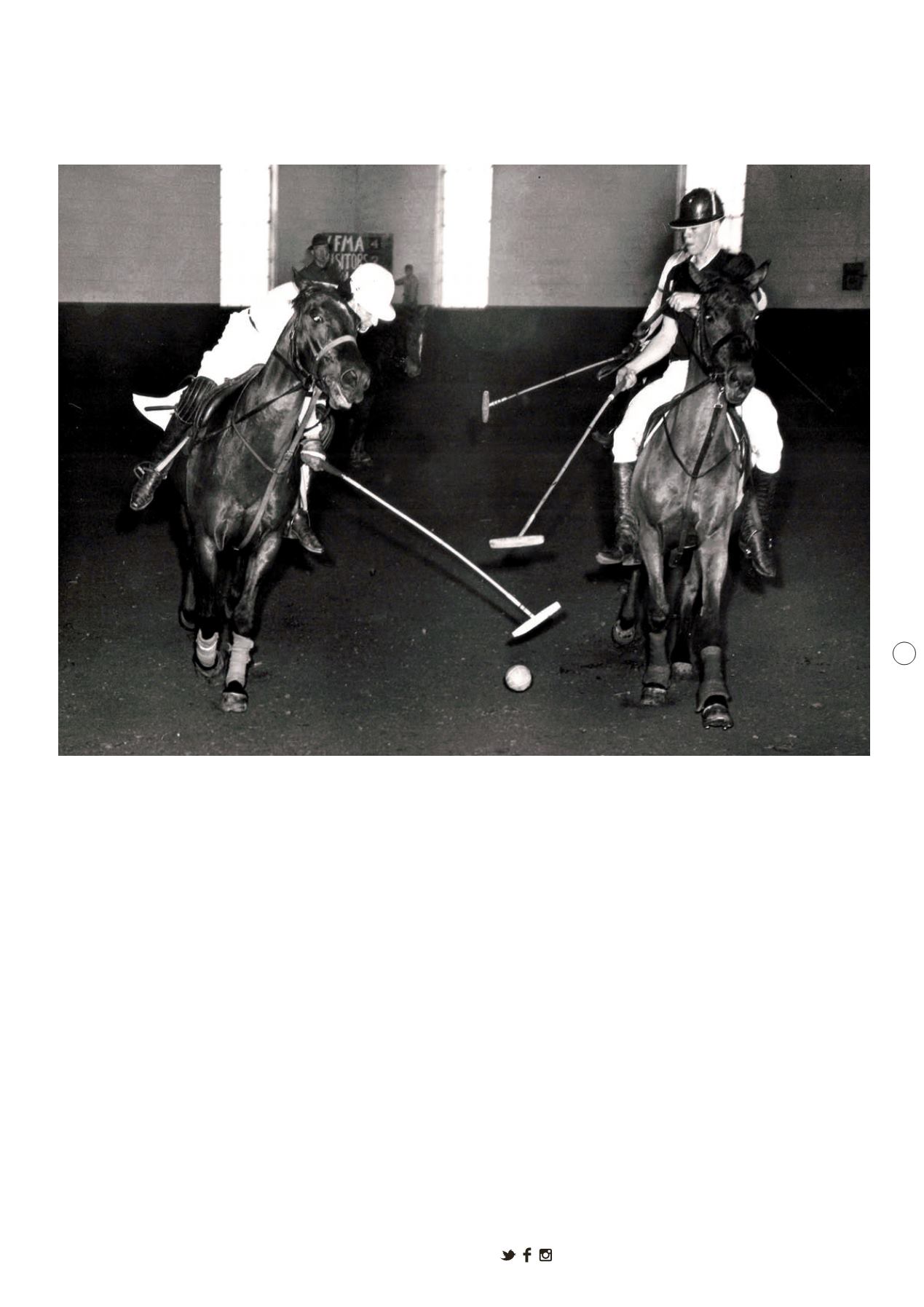
31
follow @hurlinghampolo
M U S E U M O F P O LO
It may surprise the average polo fan to
learn that in the US the game was first
played indoors. It has been reported that
after seeing polo being played in Europe,
New York Herald
publisher and sportsman,
James Gordon Bennett collaborated with
businessman Hermann Oelrichs to
orchestrate the importation of the game
to the US. Oelrichs travelled to England to
source balls and mallets for the new club and
Bennett dispatched New York riding master
Harry Blasson to Texas to procure suitable
mounts. In early 1876 the game got underway
indoors at Dickel’s Riding Academy on the
corner of 5th Avenue and East 39th Street.
In Horace Laffaye’s book,
Polo in the
United States: A History
, he writes: ‘Most
likely James Gordon Bennett and his friends
did not realize that they were starting a new
game, but in fact it was the first time the
indoor version had been played anywhere.’
The outdoor version of the game exploded
in the spring, following the construction of
a field at Jerome Park, however its roots in
the US began at Dickel’s Riding Academy.
In the late 19th century, New York
City boasted a number of riding schools
and academies, and there were plenty of
mounts available to rent. When the game
was picked up as a training exercise for the
army and National Guard, additional horses,
participants and facilities became available
to the burgeoning game.
Relegated to a second-tier status by the
outdoor game, indoor polo (as it was referred
to) offered players an opportunity to stay in
shape during cold winter months and a more
economical approach to the game.
In January of 1910, over 60 prominent
polo players gathered at Durland’s Riding
Academy on New York’s West 66th
Street to form the National Indoor Polo
Association, electing Harry Gugenheimer
as its first president. Five years later,
under the leadership of George C Sherman,
the group was reorganized as the Indoor
Polo Association of America and
flourished for decades.
With just three players on each side,
early games consisted of two ten-minute
chukkas separated by a ten-minute
intermission, allowing the players to
compete with only one or two horses.
Arena polo requires much more nimble
turning, checking and racing than the
outdoor game. There is a much higher
premium on teamwork and expert handling
This page:
Indoor action
at Valley Forge Military
Academy


